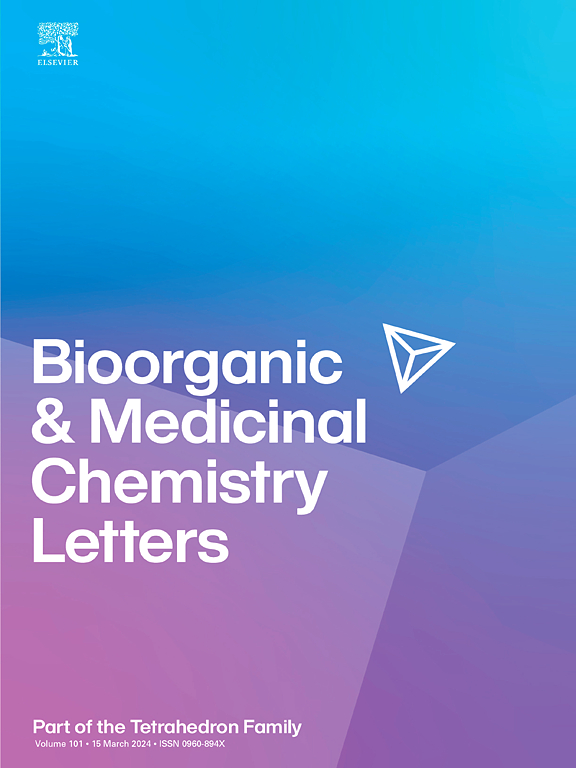(E)-3-(3-([1,1′-Biphenyl]-4-yl)-1-phenyl-1H-pyrazol-4-yl)-1-phenylprop-2-en-1-ones inducing reactive oxygen species generation through glutathione depletion
IF 2.2
4区 医学
Q3 CHEMISTRY, MEDICINAL
引用次数: 0
Abstract
The accumulation of reactive oxygen species (ROS) disrupts reduction–oxidation homeostasis, which can result in damage to cancer cells. To identify the compounds generating ROS, compounds containing Michael acceptors were designed because they are suggested to be critical for ROS elevation via glutathione depletion. Twelve (E)-3-(3-([1,1′-biphenyl]-4-yl)-1-phenyl-1H-pyrazol-4-yl)-1-phenylprop-2-en-1-ones were synthesized and identified using nuclear magnetic resonance spectroscopy and mass spectrometry. Intracellular ROS levels induced by treatment with the compounds were determined using fluorescence microscopy with the oxidant-sensing fluorescent probe 2′,7′-dichlorodihydrofluorescein diacetate. We selected compound 9, which showed the highest activity, and performed further biological experiments, including glutathione depletion and apoptosis assays, using MIA PaCa-2 pancreatic cancer cells. Additionally, the reason why the intracellular ROS level by compound 9 was lower than that of menadione used as a control was explained through in silico docking experiments. Our findings suggest that compound 9 has the potential to act as an anticancer agent by inducing ROS generation through the depletion of intracellular glutathione.

(E)-3-(3-([1,1'-联苯]-4-基)-1-苯基- 1h -吡唑-4-基)-1-苯基prop-2-en-1-ones通过谷胱甘肽耗竭诱导活性氧生成。
活性氧(ROS)的积累破坏了还原氧化平衡,从而导致癌细胞受损。为了确定产生ROS的化合物,设计了含有Michael受体的化合物,因为它们被认为是通过谷胱甘肽耗竭引起ROS升高的关键。合成了12个(E)-3-(3-([1,1'-联苯]-4-基)-1-苯基- 1h -吡唑-4-基)-1-苯丙-2-烯-1-化合物,并用核磁共振波谱和质谱技术对其进行了鉴定。用氧化感应荧光探针2',7'-二氯二氢荧光素双乙酸酯,用荧光显微镜检测化合物处理后细胞内ROS水平。我们选择了活性最高的化合物9,并使用MIA PaCa-2胰腺癌细胞进行了进一步的生物学实验,包括谷胱甘肽耗竭和细胞凋亡实验。另外,通过硅对接实验解释了化合物9细胞内ROS水平低于对照的原因。我们的研究结果表明,化合物9有可能通过消耗细胞内谷胱甘肽来诱导ROS的产生,从而起到抗癌作用。
本文章由计算机程序翻译,如有差异,请以英文原文为准。
求助全文
约1分钟内获得全文
求助全文
来源期刊
CiteScore
5.70
自引率
3.70%
发文量
463
审稿时长
27 days
期刊介绍:
Bioorganic & Medicinal Chemistry Letters presents preliminary experimental or theoretical research results of outstanding significance and timeliness on all aspects of science at the interface of chemistry and biology and on major advances in drug design and development. The journal publishes articles in the form of communications reporting experimental or theoretical results of special interest, and strives to provide maximum dissemination to a large, international audience.

 求助内容:
求助内容: 应助结果提醒方式:
应助结果提醒方式:


